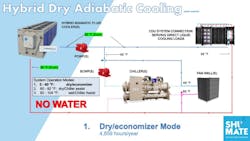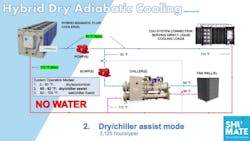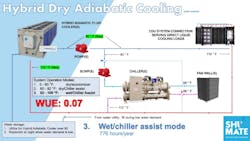A newly patented design can cool data centers with 50% less energy and 93% less water
Fueled by AI, global demand for data center capacity could more than triple by 2030, McKinsey reports. But these facilities use up enormous amounts of water and power to keep their equipment cool. In 2023, data centers consumed about 4.4% of total U.S. electricity—a figure that’s expected to reach up to 12% by 2028, according to the U.S. Department of Energy.
Shumate Engineering, a Virginia-based MEP engineering firm, has invented one solution: a cooling system that promises to support more sustainable data center growth.
According to Shumate, its closed-loop hybrid cooling system, which received approval from the U.S. Patent and Trademark Office in July, uses half as much energy and 93% less water compared to conventional cooling designs.
“With the need for massive computing power taking hold around the world, the data center industry is booming right now. However, the power and water needed to cool the racks and keep them functioning has limited its progress,” R. Stephen Spinazzola, Shumate’s Director of Mission Critical Services, said in a statement. Spinazzola and Justin Penrod, Shumate’s Director of Mechanical Engineering, co-invented the design.
Dubbed Hybrid-Dry/Adiabatic Cooling (HD/AC), the system uses a single closed loop running two taps at different water temperatures—68°F water for traditional air cooling and 90°F water for direct-to-chip liquid cooling—to cool high-density data-center racks with both fans and direct liquid. The system’s ability to alternate between the two approaches is what sets the design apart, according to Shumate.
The design features a hybrid adiabatic cooler—a dry cooler that activates the evaporative function only when outdoor conditions require it. During cooler months or off-peak hours, the system works in the dry economizer mode. In warmer periods, the system modulates to leverage the chillers without overusing energy or water.
Shumate’s system will be implemented in the TPC Data Center in Laurel, Md., currently in design. The HD/AC system can be used both to retrofit legacy data centers and to enable new facilities to meet ESG targets.



